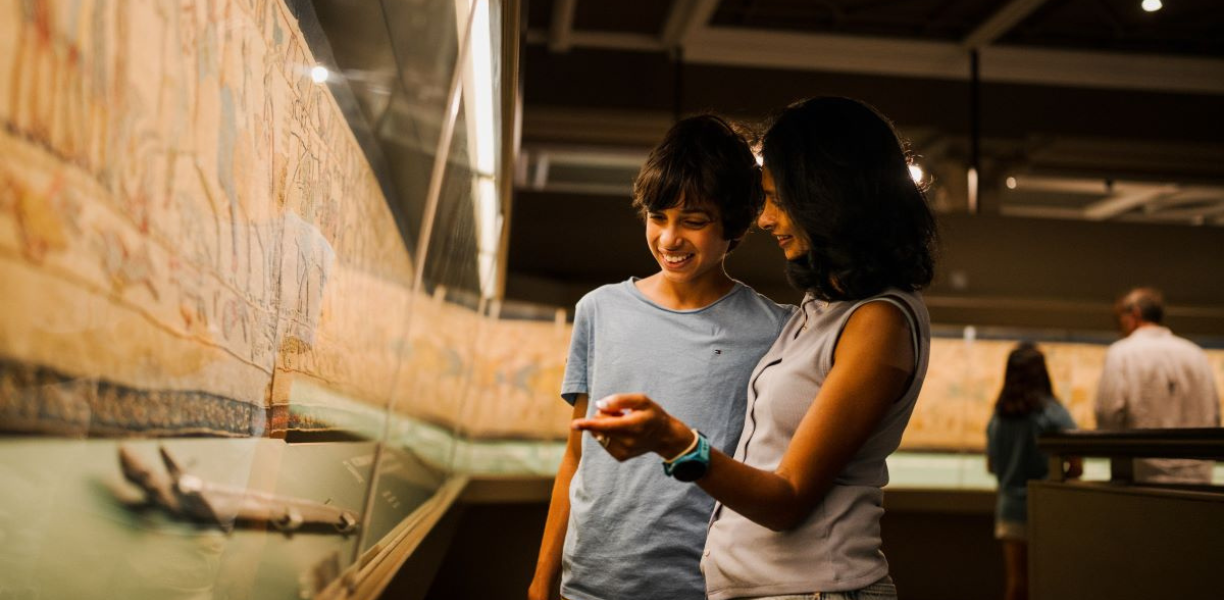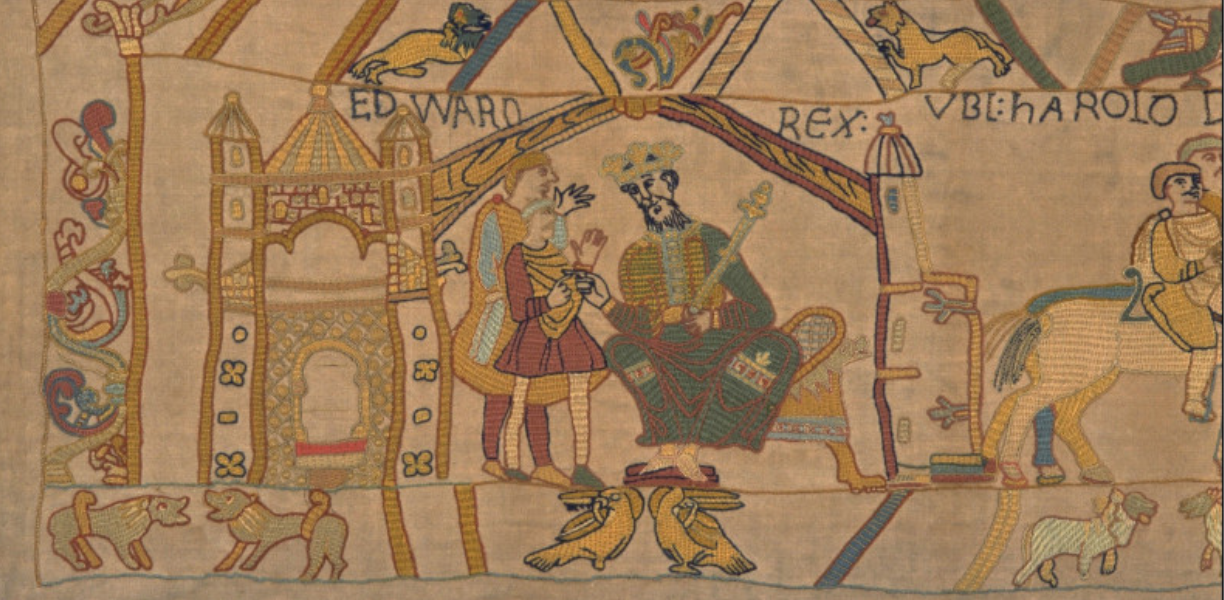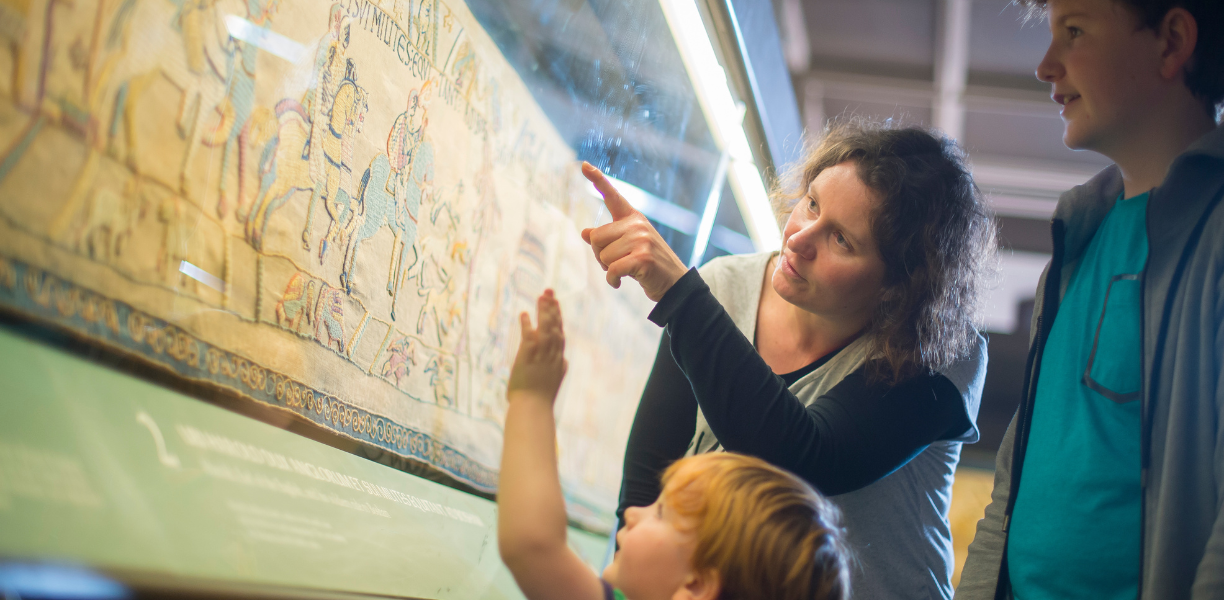
This is a tale of two “tapestries”. The Bayeux Tapestry is a stunning medieval embroidery showing the dramatic Norman conquest of England in brilliant colours. The central story is the victorious invasion of the Norman Duke William the Conqueror and his defeat of the Anglo-Saxon English King Harold Godwinson in 1066. This world-famous piece of art is housed in Bayeux in Normandy and will be coming to the UK for a much-anticipated loan in 2026. However, the impressive Victorian replica, the only full-scale copy of the original, can be already seen in all its’ glory on the Great West Way at Reading Museum in Berkshire.
In truth the original Bayeux Tapestry is not a tapestry at all and was not made in Bayeux. It is thought to have been made in Canterbury in England, by skilled embroiderers working for a powerful Norman patron, and was produced within decades of the scenes depicted. The story is a long cartoon strip showing the dramatic events from 1064-1066 that led to the Norman conquest of England, with William and Harold as the major characters.

Credit Reading Museum
The large central panel captures the epic political story, with two borders capturing the immersive medieval world, in rich colours and dramatic scenes. Myths, hunts, angry farmers dealing with cheeky birds and saucy romance surround the main scenes of political betrayal, blackmail and of course terrible depictions of great and deadly battles.
People have been fascinated by the Bayeux Tapestry since it resurfaced 300 years ago. One of those whose attention was fixed on the embroidery was the skilled Victorian embroiderer Elizabeth Wardle, who organised the making of Britain’s Bayeux Tapestry in 1886.
The vibrant Victorian copy is a full-size replica, painstakingly stitched by 34 women from Leek in Staffordshire, England. The scenes and colours were recreated by studying the original tapestry as well as sketches, engravings and photographs owned by the V&A Museum in London. It was designed to be a perfect copy, but it is missing some of the human and animal nudity, due to prudish men working for the V&A Museum removing it from the material that was lent. Britain’s Bayeux Tapestry went on a world tour in the late 19th century before it found a home at Reading Museum in 1895.

Britain’s Bayeux Tapestry ended its journey in medieval Reading, the burial place of William the Conqueror’s youngest son, King Henry I of England. It is displayed in Reading Museum alongside medieval weaponry, recovered from the Thames and beautifully carved stones, from the ruins of the great royal Reading Abbey. Founded in 1121, Reading Abbey was a great royal complex and is the heart of the Reading Abbey Quarter, which contains Reading Museum and the medieval buildings and ruins of Reading Abbey. The Museum runs regular tours of the tapestry and the Abbey Quarter.
In July 2025, the UK and French governments announced that the Bayeux Tapestry is due to travel to the UK next year, part of a temporary exchange of cultural items. It will be on display in England for the first time in centuries, potentially since its creation in the 11th century. The loan has been met with enthusiasm, but travellers along the Great West Way should first arrange to stop in Reading to see Britain’s own Bayeux Tapestry, which is permanently displayed at Reading Museum.








